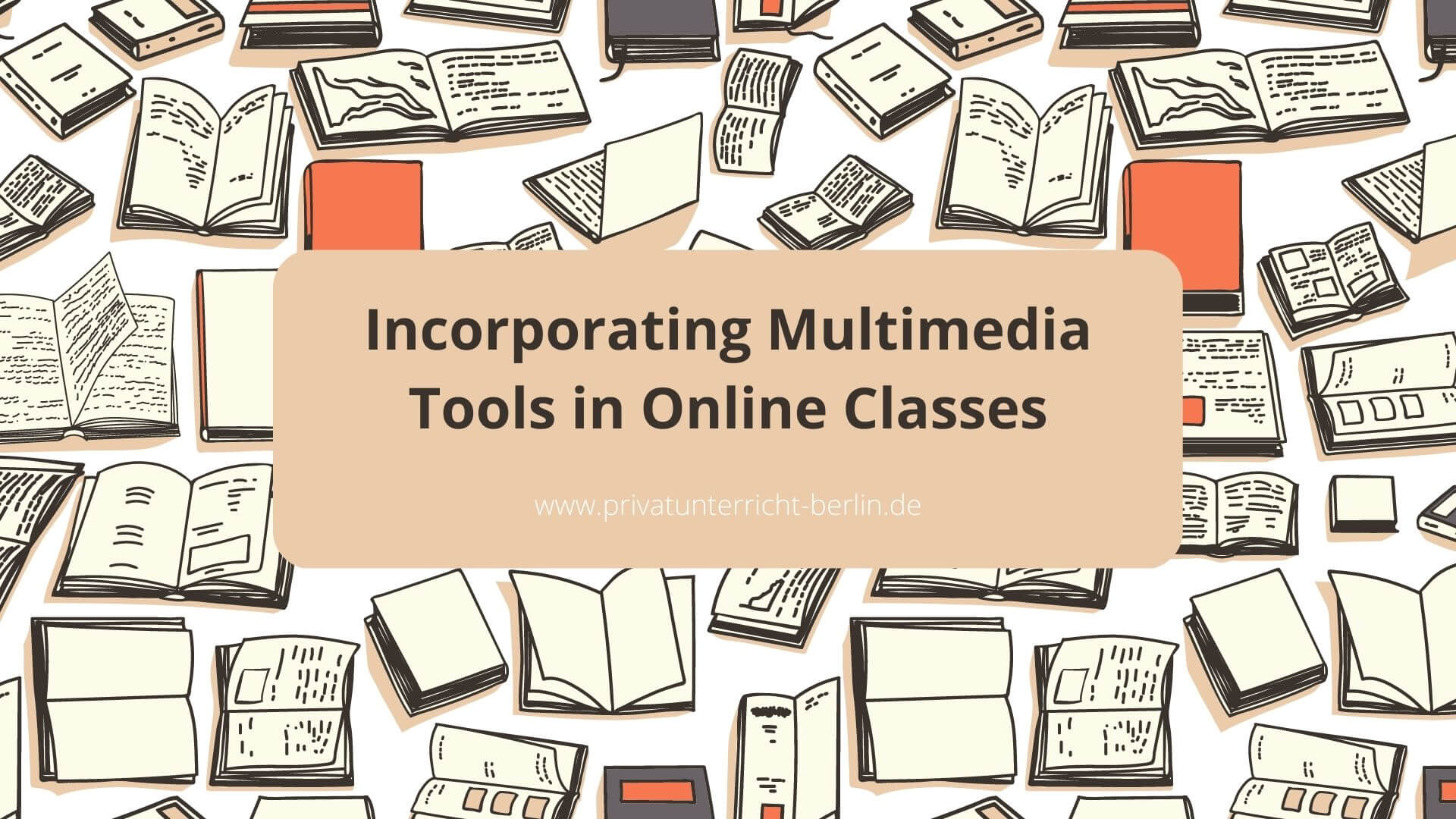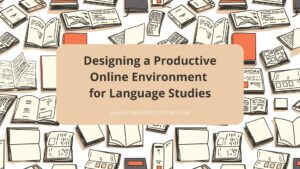Your Language Journey, Your Way: Start with a Private Tutor

Incorporating Multimedia Tools In Online Classes
Hey there, fellow educators! As a multimedia educational technology specialist, I am excited to share my insights on incorporating multimedia tools in online classes.
With the onset of the pandemic and social distancing measures, online learning has become more prevalent. This shift to virtual classrooms has brought many challenges for instructors and students alike.
One significant challenge that surfaced was keeping students engaged in an online environment. Traditional teaching methods often relied heavily on face-to-face interaction and visual aids like whiteboards or projectors. However, these elements are not easily replicated in an online classroom setting.
Fortunately, multimedia tools can effectively engage students and enhance their experience in the virtual classroom. In this article, we will explore ways to incorporate multimedia tools into our lessons while addressing some common concerns related to using them.
Table of Contents
The Benefits Of Using Multimedia Tools In Online Classes
As an educational technology specialist, it is imperative to acknowledge online teaching challenges. One of the educators’ most significant hurdles in virtual classrooms is keeping students engaged and motivated. This situation has prompted many instructors to seek innovative solutions for enhancing student engagement and pedagogical effectiveness.
Multimedia tools have emerged as a viable solution in this regard. By incorporating multimedia elements such as videos, images, audio recordings, animations, and infographics into their lessons, teachers can create dynamic learning experiences that cater to different learning styles. Visual aids like diagrams and illustrations help learners understand complex concepts quickly, while interactive activities stimulate critical thinking skills.
Using multimedia tools also allows instructors to personalize instruction by tailoring content to meet individual needs or interests. Ultimately, these benefits result in improved knowledge retention rates among learners and higher motivation toward education.
Types Of Multimedia Tools To Incorporate Into Online Teaching
As an online educational technology specialist, I recommend incorporating interactive simulations and virtual field trips in your online classes. These multimedia tools are powerful techniques that can help students understand complex concepts more effectively while providing a fun and engaging learning experience.
Interactive simulations allow students to engage with the subject by simulating real-world environments or processes. For instance, you could use an interactive simulation to teach physics principles like projectile motion or chemistry reactions.
Virtual field trips, on the other hand, provide immersive experiences that enable learners to explore different parts of the world without leaving their homes. A virtual field trip could take your students through ancient Egyptian ruins or transport them to the surface of Mars for an unforgettable adventure.
Using these multimedia tools in your online teaching practice will keep students engaged and inspired throughout the course material.
Moving forward, it’s essential to consider strategies for effectively integrating multimedia tools into your online courses. In doing so, we must evaluate how best to incorporate these elements within our curriculum design frameworks alongside traditional methods such as lectures and assessments.
Let’s explore ways to ensure that multimedia tools become a central part of our pedagogy rather than just another add-on technique.
Strategies For Effective Integration Of Multimedia Tools
As discussed in the previous section, various multimedia tools can be incorporated into online teaching to enhance student learning experiences. However, it is not enough to use these tools without a proper plan and strategy for integration.
Assessment methods play an essential role in ensuring the effective integration of multimedia tools in online classes. Instructors should consider how they will assess students’ understanding and engagement with the material presented through these tools. This could involve creating quizzes or assignments that require students to demonstrate their knowledge using different forms of media.
Additionally, instructors can utilize analytics provided by some platforms to track student progress and adjust their approach accordingly. By incorporating assessment strategies explicitly tailored for multimedia-based instruction, instructors can ensure that their efforts contribute positively to student outcomes.
Common Concerns And Solutions For Using Multimedia Tools In Online Classes
Technical issues can be a primary concern for online instructors incorporating multimedia tools into their classes, so it’s essential to have a clear plan for troubleshooting them.
Privacy and security are also key considerations when using multimedia tools in online classes, so ensuring you have the proper privacy and security protocols in place is critical.
Technical Issues
As a multimedia educational technology specialist, I understand that technical issues can be a common concern when using multimedia tools in online classes.
But don’t worry; there are standard solutions and troubleshooting techniques you can use to overcome these obstacles.
Firstly, ensuring your equipment is up-to-date and compatible with the software or platform being used is vital.
Additionally, backup plans such as alternative communication methods can help mitigate potential problems.
Impact assessment and evaluation methods for technical difficulties in online learning should also be utilized to ensure student success.
Remember to stay calm and focused during technical difficulties – your positive attitude will radiate through the virtual classroom and keep students engaged despite any hiccups.
Privacy And Security
In addition to technical issues, privacy, and security are common concerns when using multimedia tools in online classes.
As a multimedia educational technology specialist, ensuring that students’ data is protected and secure while they learn virtually is crucial.
This can be achieved by implementing proper online etiquette, such as not sharing personal information with strangers or clicking on suspicious links.
Additionally, regularly updating passwords and enabling two-factor authentication can provide extra protection for teachers and students.
Impact assessment and evaluation methods should also be utilized to monitor the effectiveness of these measures toward maintaining privacy and security in virtual classrooms.
Let’s continue exploring common concerns and solutions for using multimedia tools in online classes together.
Measuring The Impact Of Multimedia Tools On Student Learning In Online Classes
Assessing the impact of multimedia tools on student learning in online classes is a critical step toward ensuring that instructors use best practices to enhance their students’ educational experiences.
Assessment methods can vary widely depending on the tool used, but there are a few key elements that all assessments should include.
Firstly, any assessment must be aligned with course objectives and communicate how it measures progress towards those objectives.
Secondly, assessments should be designed to measure short-term and long-term effects on student learning.
Thirdly, they should consider individual differences among learners, such as prior knowledge or preferred learning styles.
Lastly, practical assessments provide feedback that allows instructors to adjust instruction based on results.
By following these best practices for assessment, educators can gain valuable insights into whether or not multimedia tools are truly enhancing student learning in online courses.
It’s important to remember that while incorporating multimedia tools may seem like a straightforward way to improve student engagement and performance, it’s only one piece of the puzzle regarding effective online teaching.
By thoughtfully designing assessments around these tools and analyzing their impact, we can continue to refine our use of technology in the classroom and create more meaningful learning experiences for our students.
Frequently Asked Questions
What Are Some Examples Of Multimedia Tools That Are Not Effective In Online Classes?
As a multimedia educational technology specialist, it’s essential to consider the drawbacks of specific tools when teaching in an online environment. While many multimedia tools can enhance learning and engagement, not all are equal.
Some examples of ineffective multimedia tools include those that require high bandwidth or have compatibility issues with different devices. It’s also essential to remember that some students may have disabilities that prevent them from accessing certain media types.
Alternatives to these problematic tools could include interactive text-based resources or audio recordings that are easily accessible to all learners. Ultimately, selecting practical multimedia tools requires careful consideration of each tool’s benefits and limitations while keeping the diverse needs of learners at the forefront.
How Do You Ensure All Students Have Access To The Necessary Technology To Use Multimedia Tools?
As a multimedia educational technology specialist, ensuring that all students have access to the technology for multimedia tools is crucial.
Technology accessibility concerns can arise due to various factors such as geographic location, economic status, and disabilities.
However, it’s essential to address these issues so that every student has an equal opportunity to engage with multimedia tools.
Engaging with these tools increases student participation and interaction in online classes, leading to better learning outcomes.
Therefore, strategies like providing loaner devices or technical support can be implemented to bridge the digital divide and ensure equitable access to education through multimedia tools.
Can Multimedia Tools Be Used In All Subjects, Or Are There Certain Subjects Where They Are More Effective?
There is no one-size-fits-all approach to using multimedia tools in education. While these tools can certainly enhance the learning experience for students across all subjects, their effectiveness may vary depending on the subject matter and teaching goals.
For instance, research has shown that multimedia tools are particularly beneficial in language learning as they allow learners to engage with authentic materials and acquire new vocabulary in context more easily.
In STEM education, on the other hand, multimedia tools can help illustrate complex concepts and processes through visualizations and simulations.
As a multimedia educational technology specialist, it’s essential to consider the unique needs of each subject area when incorporating these tools into online classes.
How Can Multimedia Tools Be Used To Accommodate Different Learning Styles?
Interactive presentations and gamification in learning have revolutionized education.
Did you know that 65% of learners are visual learners?
This is where multimedia tools in online classes can make a huge difference, especially in accommodating different learning styles.
Interactive presentations engage students by allowing them to interact with the material rather than just passively watching or listening.
Gamification adds an element of fun and competition, which motivates learners to stay engaged and retain information better.
By incorporating these tools into online classes, educators can create a more inclusive and effective learning environment for all types of learners.
How Do You Balance The Use Of Multimedia Tools With Other Teaching Methods In An Online Class?
As an educational technology specialist, balancing engagement and effectiveness is crucial when using multimedia tools vs. traditional methods in online classes.
While incorporating multimedia tools can increase student engagement and provide a dynamic learning experience, it’s important not to rely solely on these tools as they may not be effective for every type of learner.
Finding a balance between multimedia tools and other teaching methods that cater to different learning styles is essential.
By doing so, students will have a well-rounded education that maximizes their potential for success.
Conclusion
In conclusion, as a multimedia educational technology specialist, I recommend incorporating various multimedia tools in online classes. Choosing practical and appropriate multimedia tools that enhance student learning experiences rather than hinder them is vital.
For example, videos or animations can be an excellent way to explain complex concepts in science or math. However, ensuring all students have access to the necessary technology to use these multimedia tools is crucial. This means considering factors such as internet connectivity, device compatibility, and accessibility for differently-abled learners.
For instance, providing transcripts for audio or video content ensures that hearing-impaired students can also participate in class activities. Properly integrating multimedia tools into online classes helps accommodate different learning styles by engaging students with visual and auditory aids.
A hypothetical case study of this would be a student who struggles with reading comprehension but excels at visual learning and may find it easier to grasp new concepts through interactive simulations or virtual reality experiences. Balancing multimedia tools with other teaching methods is essential so students can handle the situation and receive a well-rounded educational experience.



